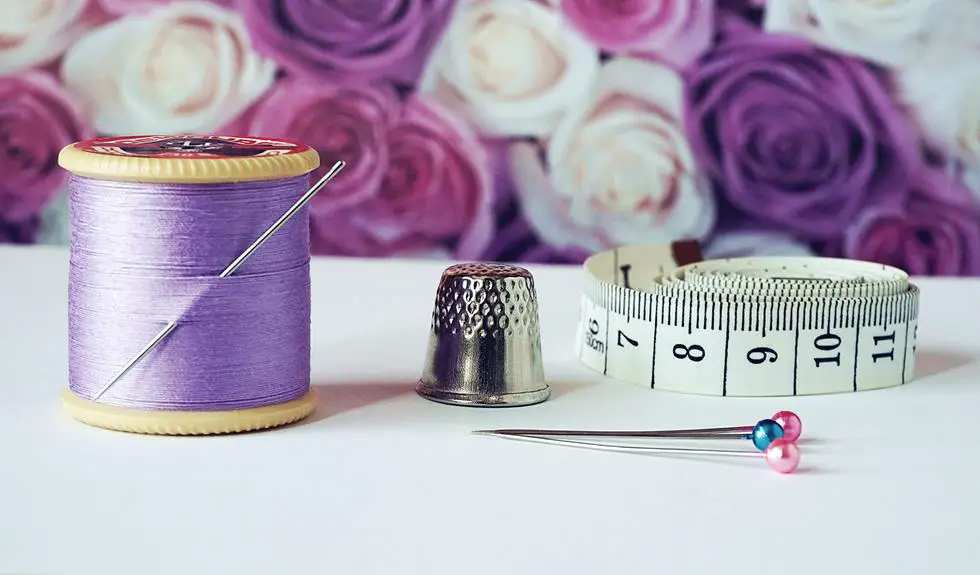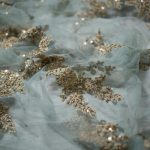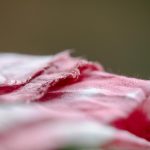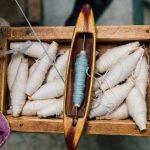When you work with gossamer fabric, you quickly realize it's not as simple as it looks. Its delicate nature means you're constantly navigating issues like snagging and fraying, making you rethink your cutting and handling techniques. Achieving the right opacity can feel like an unpredictable gamble, while sewing requires precision that not every tool can offer. The care and maintenance of such a fragile fabric add yet another layer of complexity. What specific strategies can you employ to tackle these hurdles effectively?
Table of Contents
Understanding Gossamer Fabric
Gossamer fabric, known for its delicate and ethereal quality, is often used in fashion and crafts, making it crucial to understand its unique properties. This lightweight material, typically made from silk, nylon, or polyester, offers a beautiful drape that lends itself well to garments and decor. You'll appreciate how it flows gracefully, enhancing any design with its soft, airy feel.
When working with gossamer, it's important to note its fragility. You'll find that it can easily snag or tear if handled roughly, so treat it gently during cutting and sewing. Also, because gossamer is usually ultra-thin, you'll want to select appropriate needles and thread for construction to avoid damaging the fabric and to maintain its aesthetic appeal.
Additionally, you should be aware of how gossamer responds to different conditions. It can stretch and shift, which means you'll need to use precise measuring and pinning techniques to ensure your finished piece retains its intended shape.
When understanding gossamer, you'll discover its enchanting qualities can lead to stunning creations—but only if you approach it with care and skill.
Sheerness and Opacity Issues
The sheer quality of gossamer fabric can create both stunning visual effects and significant challenges when it comes to opacity in your designs. You might love the ethereal look it provides, but managing how much skin or underlying layers show can be tricky.
One of the first decisions you'll need to make is how sheer you want your final piece to be. When layering fabrics, consider the colors and materials underneath. Light and dark shades interact differently with gossamer, affecting its transparency. If you're designing a garment, think about using linings or additional layers to control transparency without sacrificing the overall aesthetic.
Also, the fabric's movement can alter its appearance. As it flows and glides, what seemed semi-opaque can shift to more sheer in action, revealing more than you intended. This unpredictability makes it essential to conduct thorough wear tests to assess how the fabric behaves on the body.
In essence, while gossamer's delicate look can elevate your design, you'll need to carefully navigate these opacity issues to achieve the perfect balance between beauty and modesty in your creations.
Handling and Cutting Challenges
Handling gossamer fabric can be a delicate dance, as its lightweight nature often makes it prone to fraying and slipping during cutting. To tackle these challenges effectively, you need to employ careful techniques that minimize damage and ensure precision.
Here are three essential tips to keep in mind:
- Use Sharp Scissors or Rotary Cutters: A pair of dull scissors will only exacerbate the fraying issue. Invest in sharp scissors or a rotary cutter designed for delicate fabrics to create clean edges.
- Work on a Stable Surface: When you're cutting, ensure that your fabric is laid flat on a stable surface. Using a cutting mat can help grip the fabric and prevent it from slipping around.
- Pin or Weigh Down the Fabric: To keep your gossamer in place, consider using lightweight pins or fabric weights. This prevents it from shifting while you cut, allowing for more accurate and safer cuts.
Sewing Techniques for Gossamer
Sewing with gossamer requires precision and gentle techniques to ensure seams remain strong and fabric doesn't fray.
First, always use the right needle. A fine needle, like a size 60/8 or 70/10, will help create smaller holes, reducing the risk of damage. Opt for a lightweight thread, such as fine polyester, which will glide through the fabric without adding unnecessary bulk to seams.
When you're stitching, consider a longer stitch length. A length of 2.5 mm or more helps maintain flexibility while preventing puckering. Pinning can be tricky, so use fine silk pins or even basting to hold pieces together without creating large puncture marks that could weaken the fabric.
Pressing seams before sewing is a must. Use a low heat setting and a pressing cloth to avoid scorching the delicate fibers.
As you sew, take it slow, allowing yourself to focus on alignment and seam accuracy. If you encounter difficulties, don't hesitate to take breaks.
Prevention of Fraying Edges
When working with gossamer fabric, preventing fraying edges is crucial for maintaining its delicate appearance.
You can achieve this by using proper cutting techniques and implementing effective edge finishing methods.
Let's explore these strategies to help your projects look polished and professional.
Proper Cutting Techniques
To prevent fraying edges when cutting gossamer fabric, always use sharp fabric scissors and precise cutting techniques. Fraying can ruin your delicate project, so follow these tips for successful cutting:
- Iron the Fabric: Before cutting, lightly press the gossamer fabric with a low-heat iron. This will help to smooth out wrinkles and make it easier to get clean edges.
- Pin or Weigh Down: Secure the fabric with pins or weights to keep it flat and prevent shifting. This can significantly enhance your cutting accuracy and reduce the risk of uneven edges.
- Cut with Fluid Movements: Instead of using a sawing motion, make long, smooth cuts in one direction. This minimizes the chances of snagging the fibers, which can lead to fraying.
Effective Edge Finishing
Effective edge finishing is crucial for maintaining the integrity of gossamer fabric and preventing unsightly frays that can compromise your project. When working with this delicate material, you'll want to choose methods that will securely seal the edges without adding bulk. Here are a few effective techniques to consider.
First, use a fine zigzag stitch on your sewing machine. This stitch helps enclose the threads and prevents fraying. Just remember to set your machine to a short stitch length for the best results. Alternatively, you can opt for a serger if you have one; it provides a clean, professional edge finish.
Another option is to apply a fabric sealant or fray check along the edges. Simply brush a thin line along the cut edge and allow it to dry completely. This method is particularly handy for projects where you may not want any visible stitching.
Lastly, consider bias tape. While it requires a bit more effort, it offers a classy finish that neatly covers raw edges. By selecting the right finishing method, you'll keep your gossamer fabric looking polished and ready for your creative endeavors.
Care and Maintenance Concerns
Caring for gossamer fabric requires a delicate touch to prevent damage and maintain its lightweight beauty. Because of its fragile nature, you'll need to be extra careful during cleaning and storage. Here are some key maintenance tips to keep in mind:
- Gentle Washing: Always hand wash your gossamer fabric in cold water with a mild detergent. Avoid wringing or twisting it, as this can cause stretching or tearing. Instead, gently press out excess water and lay it flat to dry.
- Avoid Heat: Never use high heat when ironing or drying gossamer fabric. High temperatures can damage the fibers, leading to fraying or melting. If you must iron, use the lowest setting and place a pressing cloth between the fabric and the iron.
- Proper Storage: Store your gossamer fabric in a cool, dry place, away from direct sunlight. It's best to use acid-free tissue paper to help maintain its shape and avoid creasing. Avoid hanging it, as this can stretch the fabric over time.
Finding the Right Tools
When working with gossamer fabric, choosing the right tools is crucial.
You'll need essential cutting tools that can handle its delicate nature, as well as proper sewing techniques to ensure a flawless finish.
Let's explore the best options available to make your project a success.
Essential Cutting Tools
Finding the right cutting tools for gossamer fabric is crucial to ensure clean edges and prevent fraying. When working with such delicate material, the tools you choose can significantly impact your results.
Here are three essential cutting tools you should consider:
- Fabric Scissors: Invest in a pair of sharp, high-quality fabric scissors. They should be specifically designed for cutting fabric and not used for paper to maintain their sharpness. A good pair cuts smoothly through gossamer without snagging.
- Rotary Cutter: A rotary cutter offers precision and can slice through multiple layers of fabric effortlessly. Use it with a self-healing mat, which provides a stable cutting surface and protects your blades.
- Embroidery Scissors: These small, sharp scissors are great for detailed work and trimming edges. Their fine tips allow you to navigate around curves and tight spots, crucial when working with lightweight fabrics like gossamer.
With the right tools in hand, you'll achieve cleaner cuts and enhance your overall sewing experience. Don't underestimate the importance of investing in these essential cutting tools for your gossamer projects!
Proper Sewing Techniques
Choosing the right sewing techniques is just as important as having the right cutting tools to ensure you handle gossamer fabric effectively. When you're ready to sew, you'll want to gather a few essential tools that'll make your task easier.
Start with a lightweight needle, like a size 60/8 or 70/10, which will glide through delicately without snagging. Use a finer thread, such as a polyester or silk, to prevent bulk and maintain the fabric's drape.
When it comes to your sewing machine, make sure you set it to a longer stitch length. A straight stitch works well, as it holds the fabric together without adding unnecessary tension that could cause breakage. If you're sewing seams that might experience stress, consider using a zigzag stitch, which offers more flexibility.
To further protect your delicate fabric, use a walking foot or a teflon foot, as these tools help move the fabric smoothly without causing it to shift.
Lastly, always practice on scraps before committing to your final project. This prep goes a long way in ensuring clean seams and a successful outcome with gossamer fabric.
Frequently Asked Questions
What Types of Projects Are Best Suited for Gossamer Fabric?
You'll find gossamer fabric perfect for lightweight garments, delicate overlays, and ethereal curtains. Its sheer quality enhances bridal wear, elegant accessories, and whimsical costumes, adding an element of dreaminess that captivates and inspires creativity in your projects.
Can Gossamer Fabric Be Dyed Without Damaging It?
Yes, you can dye gossamer fabric, but be cautious. Use gentle dyeing techniques and test a small piece first. This helps avoid damage while achieving the desired color without compromising the fabric's delicate texture.
What Are Common Uses of Gossamer Fabric in Fashion?
You'll find gossamer fabric commonly used in evening gowns, bridal wear, and lightweight accessories. It adds a delicate touch to layered outfits and can create stunning effects in draping, enhancing the overall aesthetic of your designs.
How Does Gossamer Fabric Compare to Other Sheer Fabrics?
Gossamer fabric's lightness sets it apart from other sheer fabrics. You'll find it's softer and more delicate, offering an ethereal quality that enhances garments beautifully, while still being versatile for layering and unique design elements.
Where Can I Purchase High-Quality Gossamer Fabric?
You can purchase high-quality gossamer fabric at specialty fabric stores, online retailers like Etsy or Amazon, and websites dedicated to sewing supplies. Always check customer reviews to ensure you're getting the best quality available.
- How Does Ring Spun Cotton Affect Garment Fit and Shape Retention? - August 13, 2024
- What Are the Challenges in Producing Ring Spun Cotton? - August 13, 2024
- Is Ring Spun Cotton Suitable for Plus-Size Clothing? - August 13, 2024







